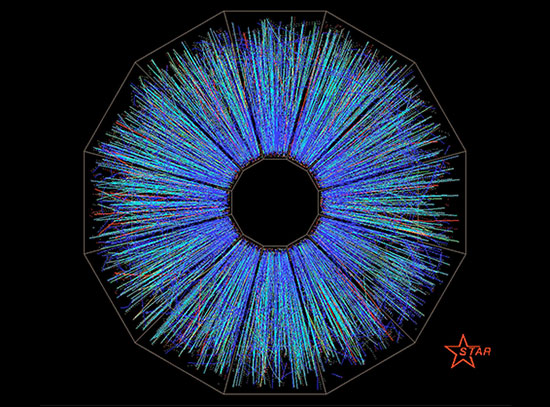Leading Scientific Journal Publishes Answer to Age-old Mystery: Why are the New York Pine Barrens 'Barren'?
Dowling College scientist leads research discovery of unique microbial community in Long Island’s Pine Barrens Region
October 20, 2011
The following press release on the discovery of unique composition of microorganisms present in Pine Barrens soil was issued by Dowling College. This work was done in collaboration with Brookhaven Lab.
OAKDALE, N.Y. — A team of investigators led by Dowling College scientist and Biology Department Chair Dr. Vishal Shah have discovered that a unique composition of microorganisms present in Pine Barrens soil is responsible for its inability to sustain growth of traditional plants.
The findings, entitled, “Bacterial and Archaea Community Present in the Pine Barrens Forest of Long Island, NY: Unusually High Percentage of Ammonia Oxidizing Bacteria,” are reported in PLoS ONE, a leading scientific journal. The study represents direct evidence linking the high percentage of a microbial community with poor nutritional quality of the soil.
“For centuries only naturally adapted vegetation such as pine, oak and blueberries have grown in the Pine Barrens region—an area that is unable to sustain the growth of traditional vegetables and field crops on the east end of Long Island,” Shah said. “We knew that poor nutrition in the soil prevents the growth of normal vegetation—now we’ve unraveled the age-old mystery explaining why the soil in the Pine Barrens is poor in nutrition.”
The finding of the study reveals that microorganisms in the soil are responsible for depleting the soil of nitrogen, a key nutrient for plants. Degradation of plant litter and nitrogen-fixing organisms provides nitrogen in the form of ammonia. Ammonia is required for plants to grow in normal soil. The report explains that in the Pine Barrens soil, ammonia could be immediately converted to nitrates by microorganisms. Nitrates are leached out of soil by natural activities such as rain making the soil poor. In fact, in normal soil less than 1% of the total microbial population is composed of microorganisms converting ammonia to nitrates. In Pine Barrens soil, these organisms could occupy as high as 41% of the total microbial community.
“This research is an important step in understanding this nutrient poor ecosystem and helps to explain why nitrogen is so difficult to detect in Pine Barrens soils,” says Dr. Tim Green, Brookhaven National Lab’s natural resource manager and chairman of The Foundation of Ecological Research in the Northeast. This new information opens the door to understanding the role of the microbial world in this ecosystem and may lead to explanations for impacts of acid rain, nitrogen deposition, and invasive species roles in the changing environment of the Pine Barrens.
The research team composed of scientists and students from Dowling College and Southern University at New Orleans, Brookhaven National Laboratory, and Research and Testing Laboratory is now looking at the impact of human activities on the microbial community and its relationship to the conservation of Pine Barrens.
2011-11338 | INT/EXT | Newsroom









